How to spot Mexican bean beetles and combat these destructive vegetable garden pests
Keep your eyes open, as it is not just beans that these hungry beetles go for
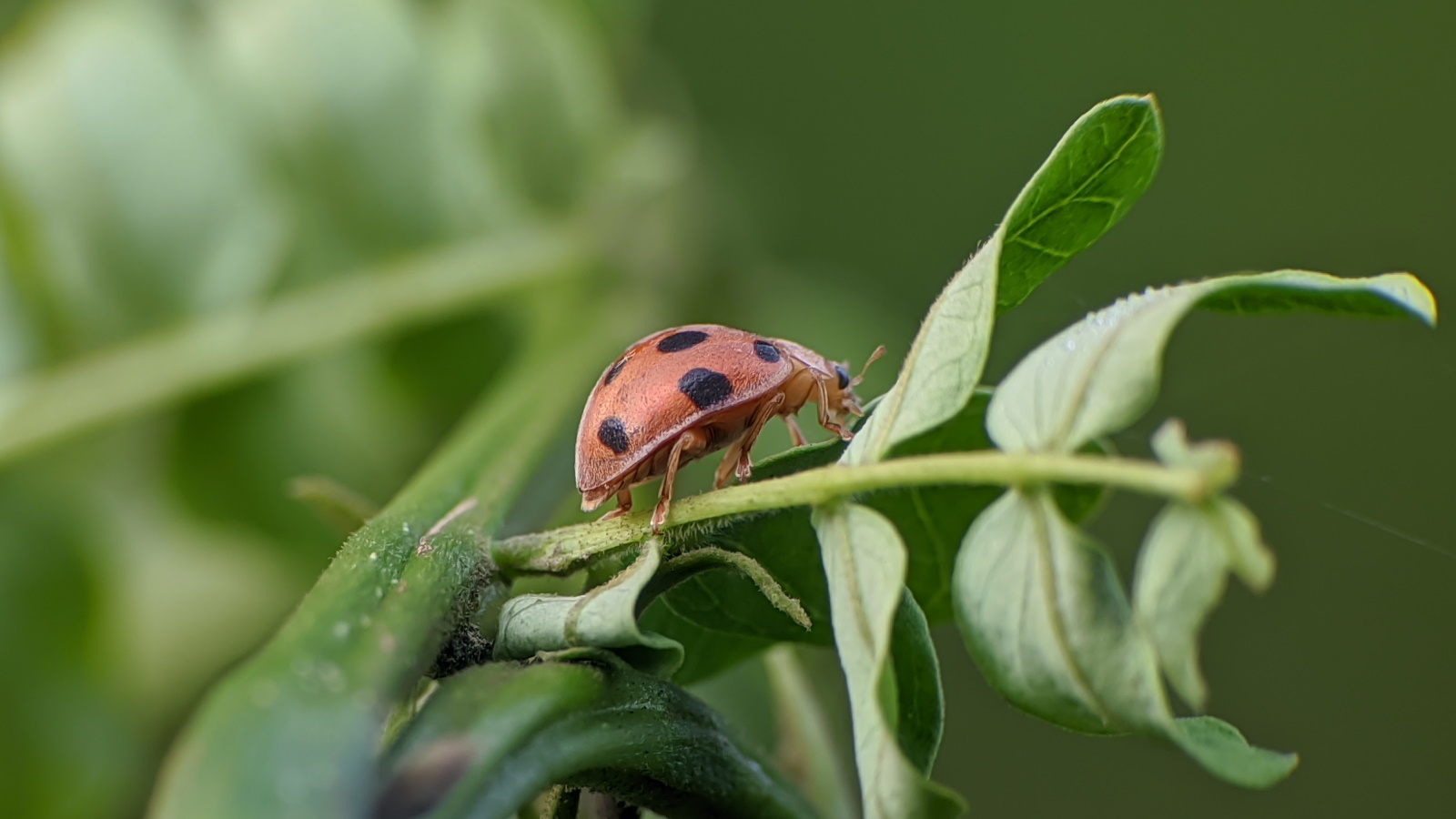

Mexican bean beetles are highly devastating pests that attack bean plants - as the name suggests - and more. They feast on plants and are capable of causing huge damage, wrecking any potential crop.
But what are they, and how can you control Mexican bean beetles? They are distinctive beetles with a fast lifecycle and they wreak havoc in both their larvae and adult forms. Munching through plants with a voracious appetite, they leave skeletonized leaves and ailing plants in their wake.
All is not lost, however, as there are successful ways of controlling and combating these unwanted intruders into a vegetable garden. Whether it is putting measures in place to deter Mexican bean beetles, or dealing with them once the sign of their menace is spotted.
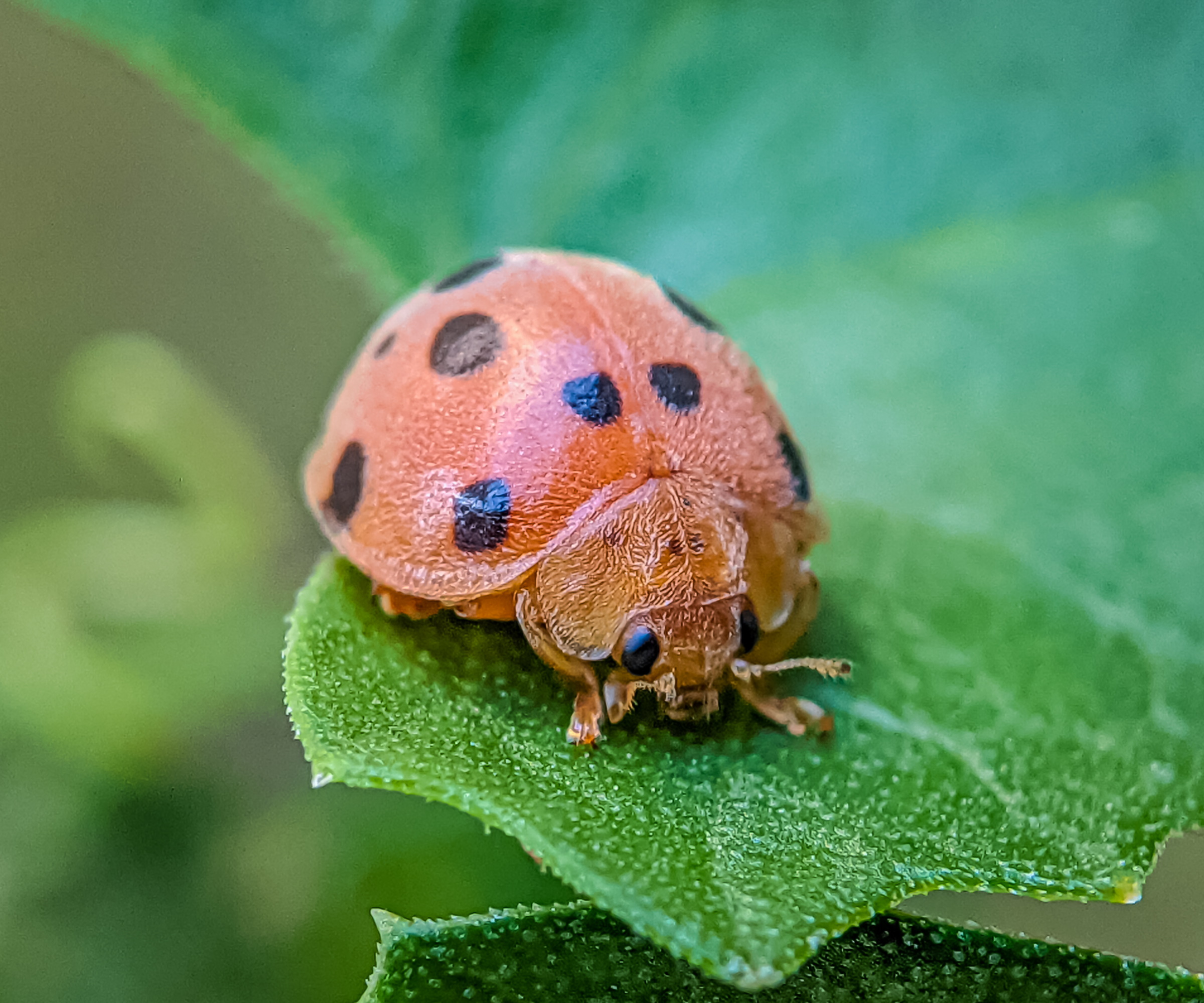
Mexican bean beetles are hungry pests
What are Mexican bean beetles?
The Mexican bean beetle (Epilachna varivestis) is a very destructive pest that is native to Central America and Mexico. They are found throughout the eastern and central regions of the United States and also in parts of Canada. The bugs are abundant in wetter and more irrigated regions but cannot tolerate extremely dry areas.
How to spot Mexican bean beetles
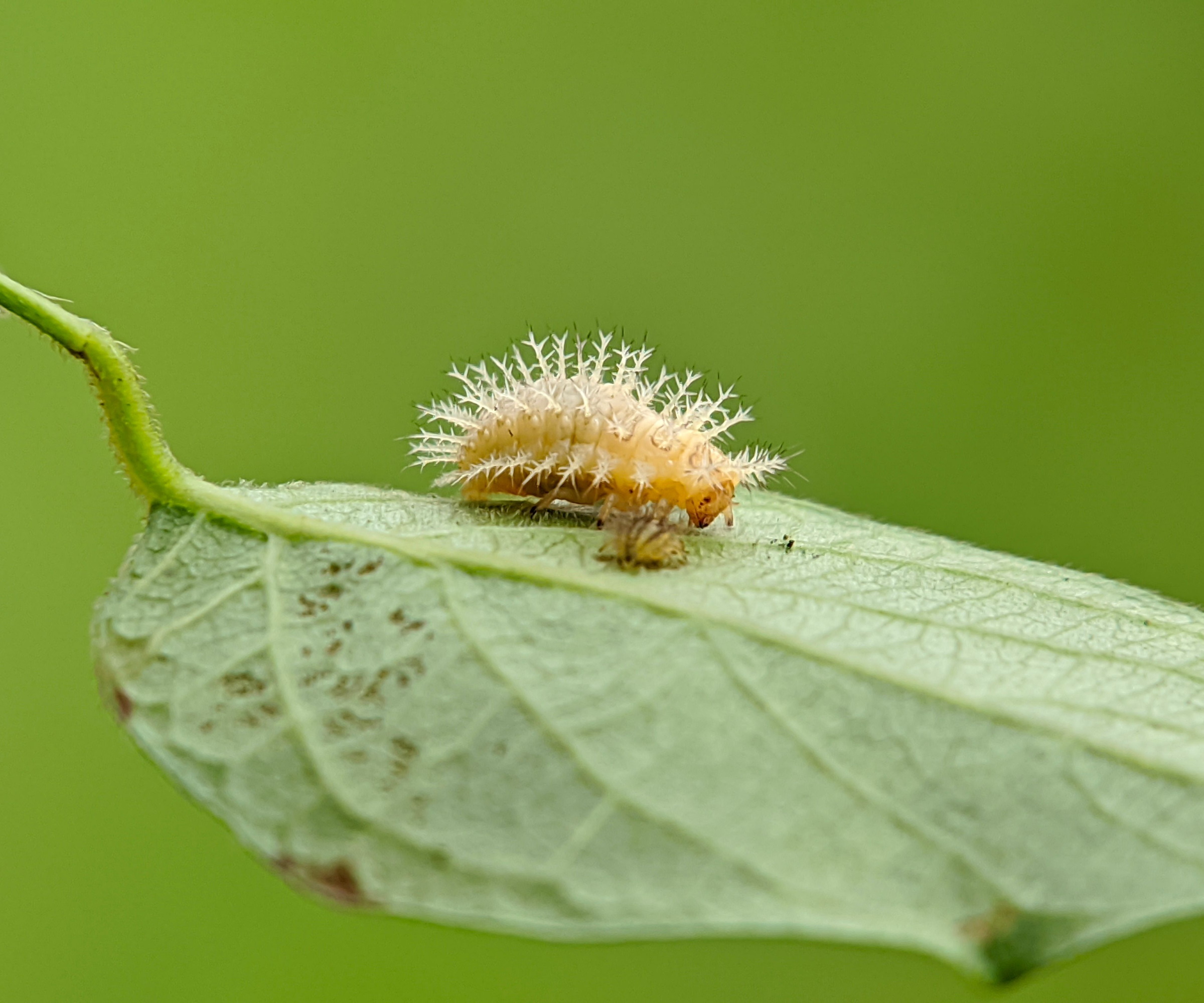
Mexican bean beetle larvae have distinctive spikes
The Mexican bean beetle targets all types of beans growing in kitchen gardens, with the likes of bush, pole, lima beans, snap, cowpeas and soybeans particularly targeted. However, it is not just beans that they go for, as Susan Mulvihill, author of the The Vegetable Garden Pest Handbook, warns: ‘Sometimes they damage cabbage, kale and mustard plants. The adults and larvae feed on the undersides of bean leaves as well as the flowers, pods and stems.’
The damage they cause can be dramatic and Mexican bean beetles tend to completely skeletonize leaves, rather than just munching holes in them like other common pests. They will also chew bean pods and stems as they eat their way across the plant.
Michelle Bruhn, founder of Forks in the Dirt and co-author of Small-Scale Homesteading, claims that Mexican bean beetles are ‘easy to ID’. She explains: ‘They are 1/3” long yellow-brown to orange beetles with 16 black spots. The yellow eggs are oval and laid on the undersides of leaves. The larvae are yellow with a black spine and can also be found in the soil.’
The distinctive black spots are arranged in a particular pattern. There are eight on each wing of the beetle and the 16 total spots are arranged in rows of 6-6-4 on the back of the pest. The larvae are oval-shaped and covered in small spines that get darker in color as they develop. They often congregate in large numbers and it is the larvae that cause lots of damage to leaves.
The life cycle of Mexican bean beetles is around 4-6 weeks long and the pests can breed prolifically. Adults emerge in mid-spring after overwintering in plant debris and females lay hundreds of eggs that can hatch within two weeks. After 3-5 weeks of feeding they pupate and emerge a few days later as adults to start the cycle again. Depending on the climate, there can be three or four generations per year.

Michelle Bruhn is the founder of Forks in the Dirt and co-author of Small-Scale Homesteading, available at Amazon. She is a nature-loving Master Gardener and local food advocate growing on the outskirts of the Twin Cities, MN.
How to prevent Mexican bean beetles
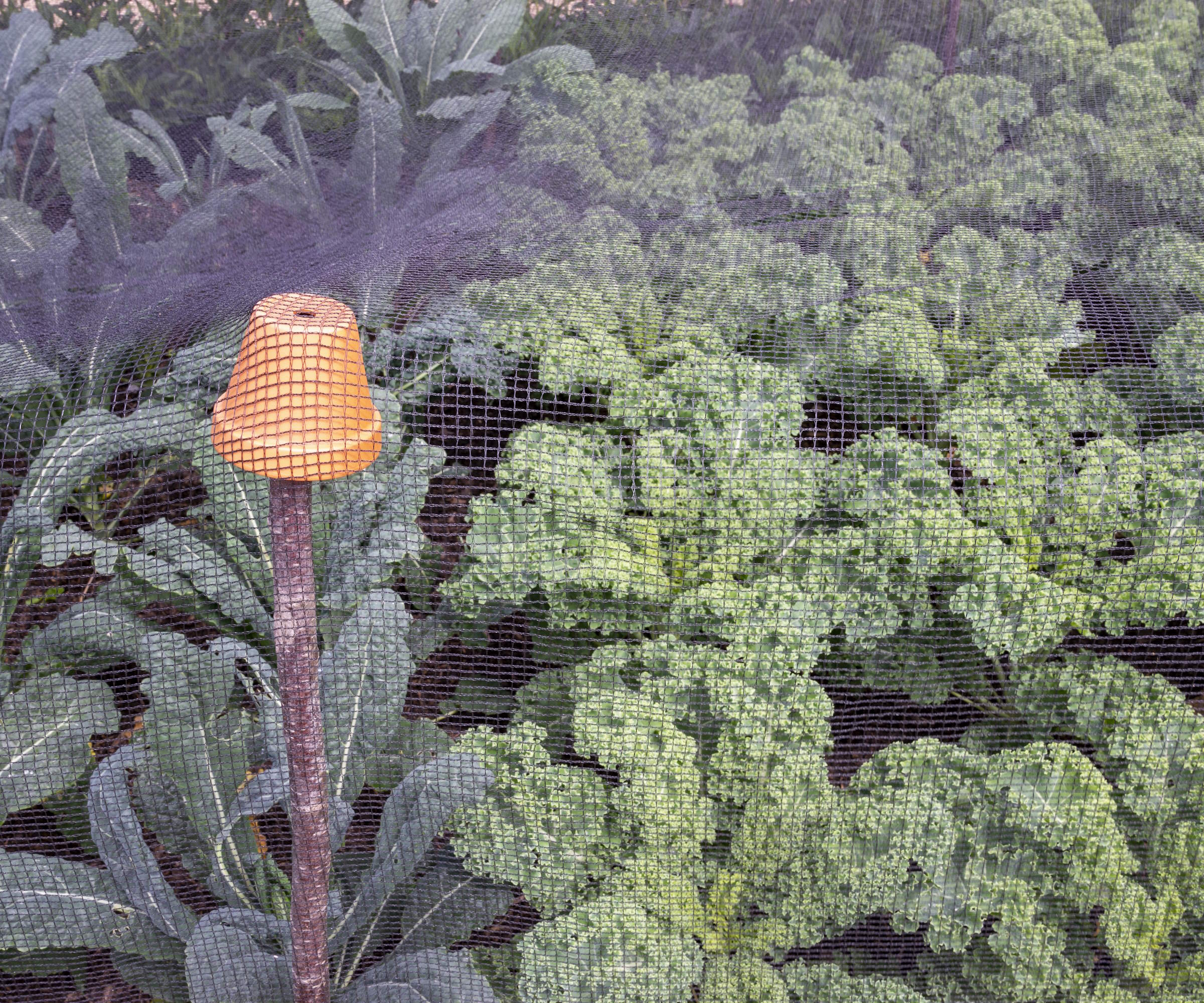
Row covers and netting can keep Mexican bean beetles off crops
There are preventative measures to take that can help reduce potential issues with Mexican bean beetles. Adopting some, or all, of the following tactics can help to avert any problems with the pests to ensure your crops thrive.
Picking the types of beans you grow can alleviate risks. For example, bush beans are regarded as less susceptible to Mexican bean beetle and planting early-season types of bush beans allows you to get an early crop before the pests become prolific in summer. There are also some bean varieties that are resistant, which are worth looking for when planning your seed sowing for the year.
Covering bean plants can keep beetles out. ‘To get the plants off to a good start, cover the bed with floating row cover as soon as you plant the seeds or seedlings; the cover will act as a barrier to keep the insects away,’ recommends Susan Mulvihill. ‘Remove it as soon as the plants begin blooming so the flowers will be pollinated.’
Companion planting is another key tool at your disposal. There are certain plants that are known to repel Mexican bean beetles, including garlic, marigolds, rosemary and nasturtiums, so planting some of these around beans can keep the pests at bay. Planting pollen-rich plants can also attract ladybugs and lacewing to your yard that eat the larvae of Mexican bean beetles as part of natural pest control tactics.
Finally, as the Mexican bean beetles overwinter in garden debris, cleaning away any plant material at the end of the season will uncover any beetles overwintering and not give them anywhere to shelter during the winter months.

Susan Mulvihill is the author of 'The Vegetable Garden Problem Solver Handbook', available at Amazon, and gardens on 5 acres in Spokane, Washington State. She has also been writing garden columns for the Sunday edition of The Spokesman-Review newspaper for nearly 20 years.
How to control Mexican bean beetles

Act fast when you see the sign of Mexican bean beetle damage
If you do spot the signs of Mexican bean beetle damage on plants, there are steps to combat the pests. For any measure to be as effective as possible, act quickly when you spot the distinctive beetles or signs of their presence.
- It may sound unpleasant, but handpicking adult beetles and larvae can be an effective method when it is only a small outbreak. Pick off the beetles and drop them into a container filled with soapy water, or simply knock them into the container. Eggs can also be crushed on the leaves.
- Beetles can be sprayed with insecticidal soap. It will coat the beetle and the larvae, smothering them, and the insecticidal soap needs to be sprayed to the underside of the leaves. Alternatively, you can make a homemade bug spray by mixing dishwashing soap with water
- Diatomaceous earth can be sprinkled around plants and applied as a dusting to the leaves
- The parasitic wasp Pediobius faveolatus targets and kills the Mexican bean beetles and can be used as a biological control for the bug. The wasp needs to be released at the right time to be effective. This is when the larvae are present on beans as they target the largest beetle larvae.
Shop Mexican bean beetle prevention measures
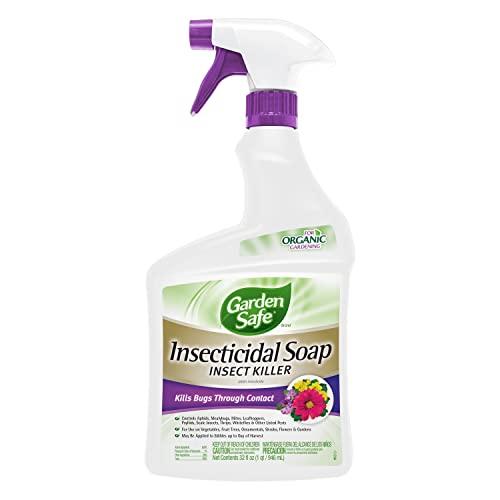
A ready to use pest control solution for organic gardening. It controls bugs through contact, including aphids, mealybugs, mites, leafhoppers, psyllids, scale insects, thrips, whiteflies and other listed pests.
FAQs
How do you tell the difference between a Mexican bean beetle and a ladybug?
The color of Mexican bean beetles can sometimes make it hard to differentiate between yellow and orange-colored ladybugs - especially as the two insects are around the same size. The distinctive black spots on the Mexican bean beetle, arranged in three rows, are one key way to tell the difference. Another difference is that ladybugs have white ‘eyes’ on their head, which Mexican bean beetles do not have.
While it may sound unappealing, hand-picking is an effective way to get rid of many larger vegetable garden pests. Along with Mexican bean beetles, the likes of tomato hornworms and Colorado potato beetles can be controlled by being hand-picked. Always carry a container of soapy water to drop the pests into and scour plants closely, including the undersides of leaves, to get as many of the unwanted pests as possible.
Sign up to the Homes & Gardens newsletter
Design expertise in your inbox – from inspiring decorating ideas and beautiful celebrity homes to practical gardening advice and shopping round-ups.

Drew’s passion for gardening started with growing vegetables and salad in raised beds in a small urban terrace garden. He has worked as a professional gardener in historic gardens and specialises in growing vegetables, fruit, herbs, and cut flowers as a kitchen gardener. That passion for growing extends to being an allotmenteer, garden blogger, and producing how-to gardening guides for websites. Drew was shortlisted for the New Talent of the Year award at the 2023 Garden Media Guild Awards.
-
 5 plants that are illegal to grow in California – how to control these invasive species in your yard, plus the native alternatives to use instead
5 plants that are illegal to grow in California – how to control these invasive species in your yard, plus the native alternatives to use insteadThese troublesome, invasive species will outcompete native plants and you could face a fine for growing them
By Thomas Rutter
-
 An architectural birdhouse is the most charming backyard trend I've ever seen – and there are lots on sale for Way Day
An architectural birdhouse is the most charming backyard trend I've ever seen – and there are lots on sale for Way DayWill you treat your garden birds to a Victorian manor, or perhaps a Cape Cod cottage?
By Tenielle Jordison

